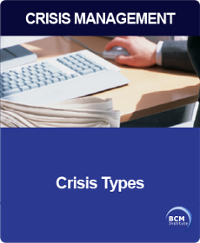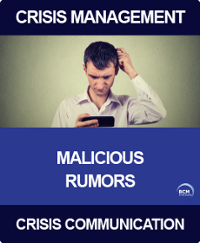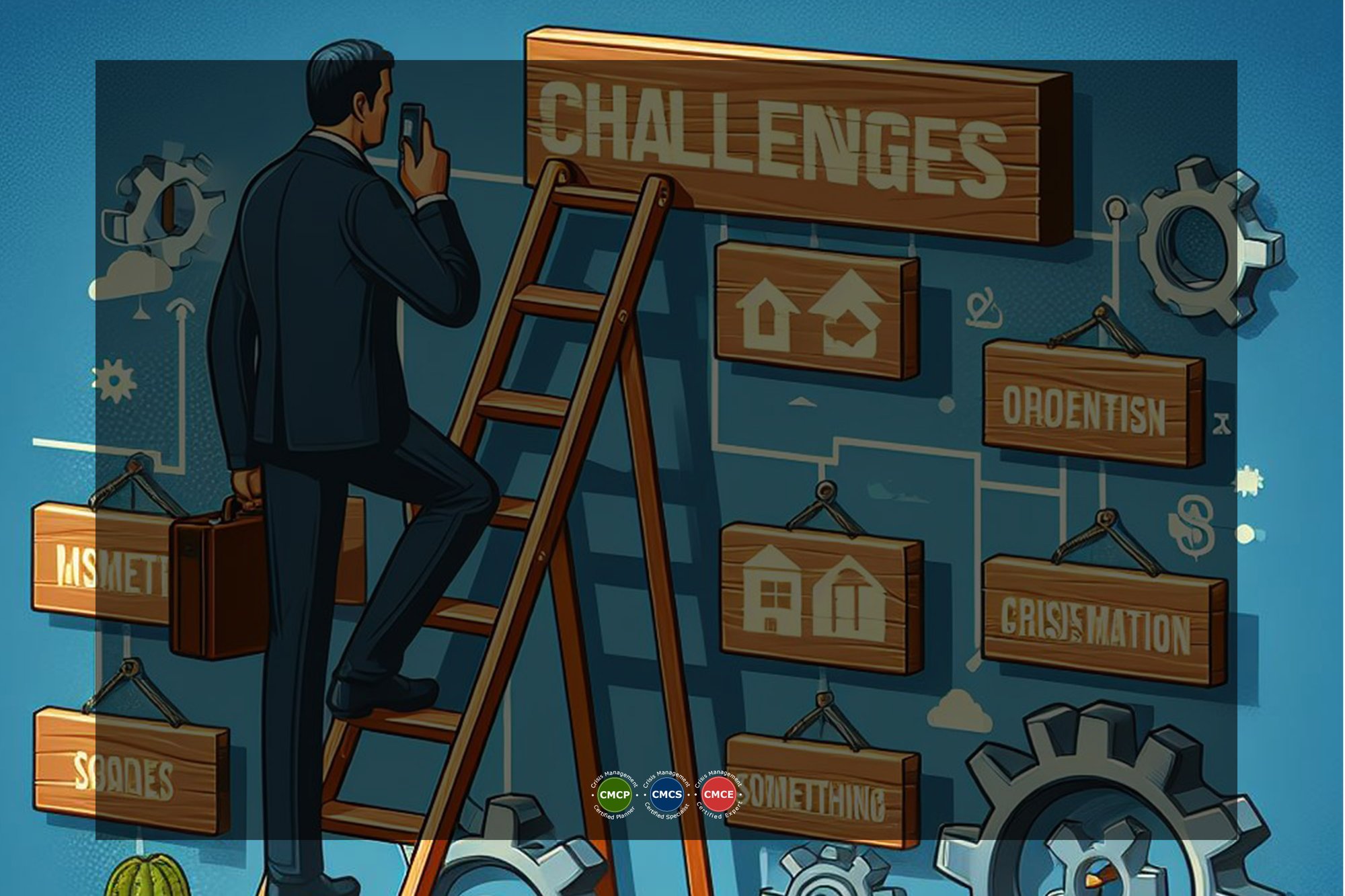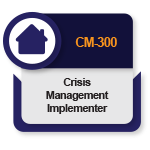 Crisis Scenario Due to the Spreading of Malicious Rumours
Crisis Scenario Due to the Spreading of Malicious Rumours
Here is another type of crisis scenario described in the "What Crisis or Crisis Scenario Should I Be Planning For My Organisation?" that is on the list to handle as part of crisis management and crisis communication. Click the right icon to read more.
Spreading of Malicious Rumours
In the digital age, information—both true and false—spreads faster than ever. A crisis driven by rumours can unfold swiftly and unexpectedly, fueled by social media, instant messaging, or office gossip.
While rumours may start as speculation or miscommunication, they can quickly snowball into major disruptions that affect employee morale, customer trust, investor confidence, and public perception.
For many organisations, the real danger lies not in the rumour itself, but in the delayed or ineffective response to it.
These crises are especially challenging because they often emerge without warning and thrive in environments where transparency is lacking.
Organisations that fail to monitor sentiment, clarify facts, or manage communications proactively may find themselves caught in a reputational spiral.
The table below outlines common examples of crisis scenarios sparked by rumours, offering a valuable reference to help organisations anticipate, identify, and respond to such incidents before they escalate.
As a Crisis Management and Crisis Communication professional appointed to handle and manage various crises that may plague your organisation, spreading rumours can sometimes seem trivial. It is often beyond the scope of the Crisis Management professional's job description.
However, it is still essential to identify and coordinate with the relevant parties responsible for implementing a crisis response plan to tackle rumours.
In the age of social media, rumours spread quickly, and fake news can leave a significant dent in the reputation of even the most respectable organisations if not addressed swiftly.
Definition: Crisis Scenario Due to Malicious Rumours
 Crisis Scenario: Rumours refer to a situation where unverified, false, or misleading information spreads internally or externally, triggering confusion, fear, operational disruption, reputational harm, or mistrust among stakeholders.
Crisis Scenario: Rumours refer to a situation where unverified, false, or misleading information spreads internally or externally, triggering confusion, fear, operational disruption, reputational harm, or mistrust among stakeholders.
These rumours can originate from employees, customers, competitors, social media, or the public and may concern layoffs, financial instability, product issues, or leadership misconduct.
Left unchecked, rumours can escalate rapidly and result in tangible consequences, even when the underlying information is entirely unfounded.
Example of Crisis Scenario: Due to Malicious Rumours
This is a list of examples for the crisis scenario: Due to Rumours, where unverified or false information spreads internally or externally, causing confusion, panic, reputational damage, or operational disruption.
| No. | Example | Description |
|---|---|---|
| 1 | Rumour of Imminent Layoffs | False or exaggerated information about mass staff layoffs causes anxiety and reduced morale. |
| 2 | Rumours of Financial Instability | Unfounded gossip about the company’s financial troubles sparks investor or customer withdrawal. |
| 3 | Fake News of Data Breach | The circulation of false reports about a major cybersecurity incident can lead to customer panic. |
| 4 | Speculation About Mergers or Acquisitions | Unconfirmed rumours about being acquired or merging with another company cause uncertainty among employees and clients. |
| 5 | False Allegations Against Leadership | Baseless accusations about executives’ misconduct or unethical behaviour damage leadership credibility. |
| 6 | Rumours of Product Recall | Misinformation spreads that a popular product is defective or unsafe, which can affect sales and brand trust. |
| 7 | False Reports of Legal Action | Untrue claims circulate that the company is facing lawsuits or regulatory penalties. |
| 8 | Misinformation on Workplace Safety | Rumours about unsafe working conditions or health hazards lead to employee protests or absenteeism. |
| 9 | Unverified Gossip About Strategic Changes | False stories about major policy shifts, restructuring, or strategic pivots unsettle staff and partners. |
| 10 | Fake News of Executive Resignations | Rumours that top executives are stepping down prompt speculation and market volatility. |
| 11 | Misleading Stories on Social Media | Viral misinformation about the company on social platforms sparks public backlash or boycotts. |
| 12 | Rumours About Vendor or Supplier Issues | Unfounded claims about supplier failures disrupt supply chain confidence and planning. |
| 13 | False Employee Misconduct Reports | Incorrect accusations against employees lead to damaged reputations and internal conflict. |
| 14 | Speculation on Changes in Customer Policy | Rumours about new fees or unfavourable terms alarm customers unnecessarily. |
| 15 | Hoaxes About Security Threats | False alerts about bomb threats, active shooters, or other emergencies cause unnecessary panic. |
Conclusion
Crises caused by rumours underscore the critical importance of trust, transparency, and timely communication. Whether the rumour concerns financial health, internal changes, or product safety, silence or denial often fuels speculation further.
Organisations must be prepared with rapid communication strategies, internal alerts, and leadership messaging to address and neutralise false narratives quickly and credibly.
To reduce vulnerability to such crises, companies should cultivate a culture of open communication, encourage fact-checking, and invest in active media and sentiment monitoring.
When stakeholders know they can rely on accurate and timely information directly from the organisation, the power of rumours is diminished.
By learning from past incidents and strengthening communication resilience, organisations can preserve trust even in the face of uncertainty.
More Information About Crisis Management Blended/Hybrid Learning Course
To learn more about the course and schedule, click the buttons below for the CM-300 Crisis Management Implementer [CM-3] and the CM-5000 Crisis Management Expert Implementer [CM-5].







![[BL-CM] [5] Register](https://3893111.fs1.hubspotusercontent-na1.net/hubfs/3893111/hub_generated/resized/cc03fe40-06da-4998-bddf-0321f7de5d46.png)

![Email to Sales Team [BCM Institute]](https://3893111.fs1.hubspotusercontent-na1.net/hubfs/3893111/hub_generated/resized/83ae9ad3-affc-416e-8f51-64218d6d98f2.png)




![Banner [BL-5-Catalog] What Expert Level Blended Learning Courses that are Available?](https://3893111.fs1.hubspotusercontent-na1.net/hubfs/3893111/hub_generated/resized/36f1ca28-ec18-458a-8e2c-a68ffc754edf.jpeg)
![[BL-3-Catalog] What Specialist Level Blended Learning Courses that are Available?](https://3893111.fs1.hubspotusercontent-na1.net/hubfs/3893111/hub_generated/resized/d51ceb4c-94ff-44ba-94ef-127ae49dd163.jpeg)

